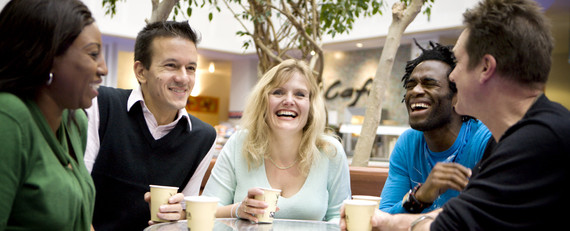Are you checking the corporate volunteering box?
I hope not. Because if you're treating this aspect of corporate philanthropy like an obligatory chore, you're missing the point and probably not running a successful program either.
These days, employees expect companies to offer a corporate volunteer program. A study by America's Charities revealed that 68% of employers report that their employees expect them to support volunteerism and 50% of employers are moving to year-round engagement with their workplace giving programs. The study further showed that employees expect their employees to provide an effective, contemporary workplace giving program; the ability to use work time to volunteer; opportunities to engage in skills-based volunteer activities; and matching gifts for employee contributions to nonprofits.
That adds up to some heavy expectations for companies, and plenty of program leaders seem to crack under the pressure by worrying themselves silly about employee participation in their volunteer programs. But they're forgetting something: high participation rates are not an end goal.
"I've learned since working in this industry that companies may be focusing on one particular area as a measurement that doesn't necessarily relate to impact," Charisse Browner, Business Development Director of America's Charities, recently told me. "Impact is not necessarily the participation rate. So many companies want to focus on participation rates, but that's not what I advise clients to look at. And even then, what defines participation? Some companies feel that participation is defined as the employee visiting the online volunteer platform. Employees are measured as participants not by volunteering or giving but just by clicking on the platform. Obviously, this has nothing to do with creating impact in the community. You want to know that what you're offering your employees is actually translating in the real world."
Why does impact matter? It's the difference between making a difference and just making noise. Everyone around you - your employees, your customers, your community - knows whether your brand image is one of a talker or doer, so how you prioritize impact affects your position in the marketplace and within your own culture.
Management consultant guru Peter Drucker once said that "culture eats strategy for breakfast." Companies that set a tone of giving back tend to see those values reflected back in employees who think differently about their work and purpose. When employees know that their company leaders care about doing good in the world - and are looking to employees to be the brand ambassadors of this goodwill - workers have a stronger sense that those leaders also care about them. Feeling valued and purpose-fueled is a liberating perspective that helps employees bring new energy and imagination to their work. And this positive feeling - if shared by enough employees - profoundly changes a company's culture.
Causecast client New Relic understands how impact helps create a strong corporate culture, and as such the company's Data Nerds for Good program has always been focused on impact, not just participation rates. Through their Causecast platform, company leaders encourage employees to share stories of volunteerism and community impact. Whether launching a new campaign or getting feedback from volunteer engagements, New Relic program admins encourage employees to share how and where they're making a difference.
Employees share the volunteer stories that matter to them - whether it's working with youth in local schools, helping encourage diversity in technology, or feeding their neighbors. New Relic then highlights these stories over the basic stats as part of their internal impact sharing.
And truly, the stats that matter above all else are precisely these kind of impact stories. It's why Causecast makes it easy for companies to elicit employee volunteer experiences through a function called StoryCapture, which helps employees document and share the volunteer experiences that have moved them in some way.
Administrators of successful volunteer and giving programs understand that storytelling makes a big difference in how their corporate philanthropy efforts impact their chosen causes as well as their employees and business community. How, what and to whom you communicate information about your volunteer and giving program all play a critical role in whether or not your volunteer program soars on the wings of inspiration. Impact is the key to a corporate culture of meaning that builds upon itself.
A culture of service is not a cactus that can live without water. But what's rewarding is that companies that cultivate this sort of culture can see it spread quickly.
One of the ways to emphasize stats around impact is by linking performance reviews to volunteering, allowing employees to demonstrate skills and strengths that management might not have otherwise been able to see in action. Conversely, managers are able to use volunteering opportunities to provide employees with new leadership and job skills that are tough (and expensive) to train for. Connecting these efforts to measurable outcomes in the community is a way to highlight impact as a paramount value at one's company.
For those who want to learn more, I'll be talking about this topic further at a webinar on Thursday, May 19th, presented by VolunteerMatch and Causecast. In the effort to help companies focus on impact over stats, we'll discuss how company leaders can listen to the needs of the community; shape corporate volunteer and giving programs around these community needs; move past the number of volunteers and start tracking the stats that matter; and transform these stats into powerful storytelling that shows real impact. (Click here to sign up.)
How you talk about your corporate responsibility program, both to your employees and your customers, is critical. The best way to communicate about your efforts is by focusing your program around real community impact - not just numbers.
Ryan Scott is the founder and CEO of Causecast, a cause engagement platform that powers employee volunteer and giving programs.
